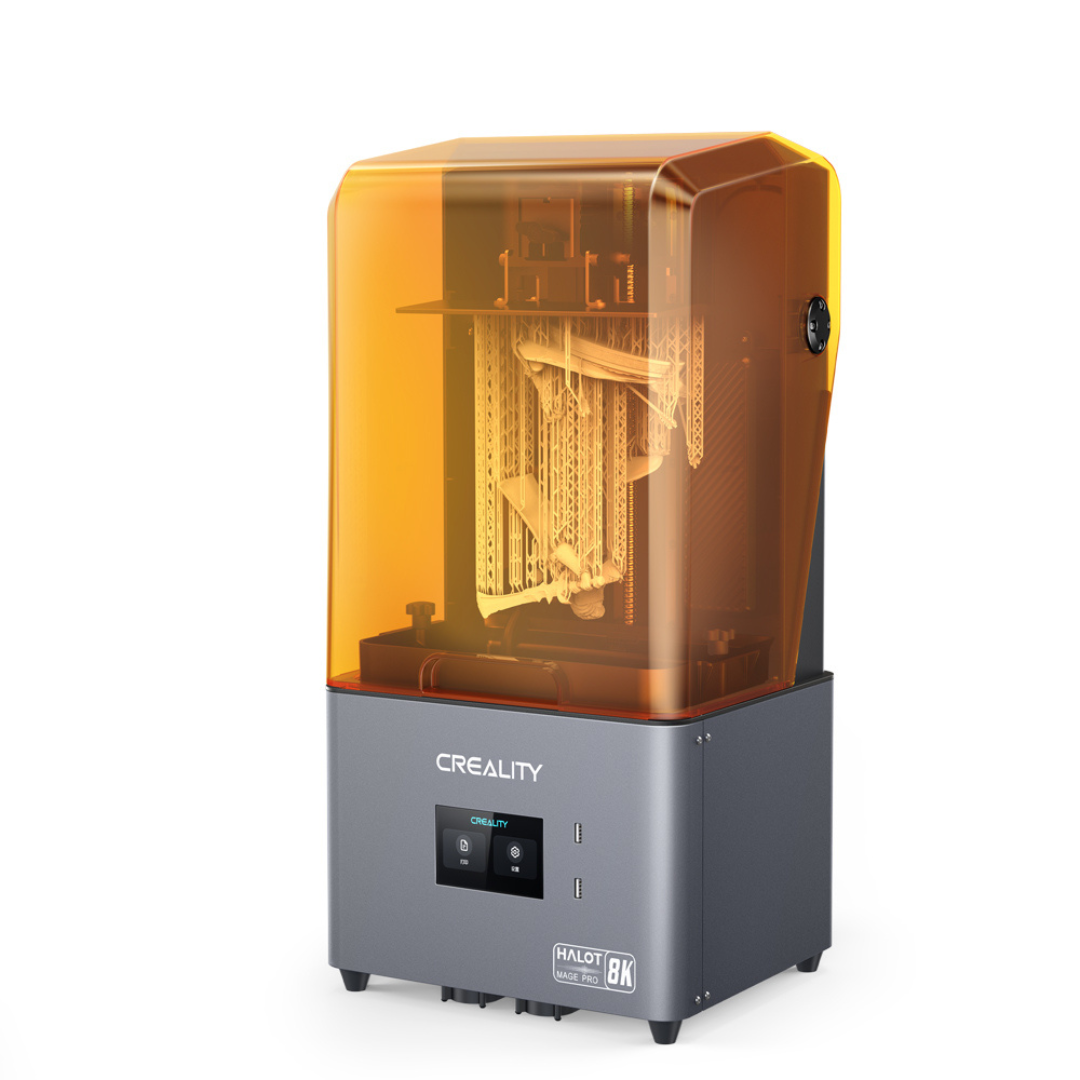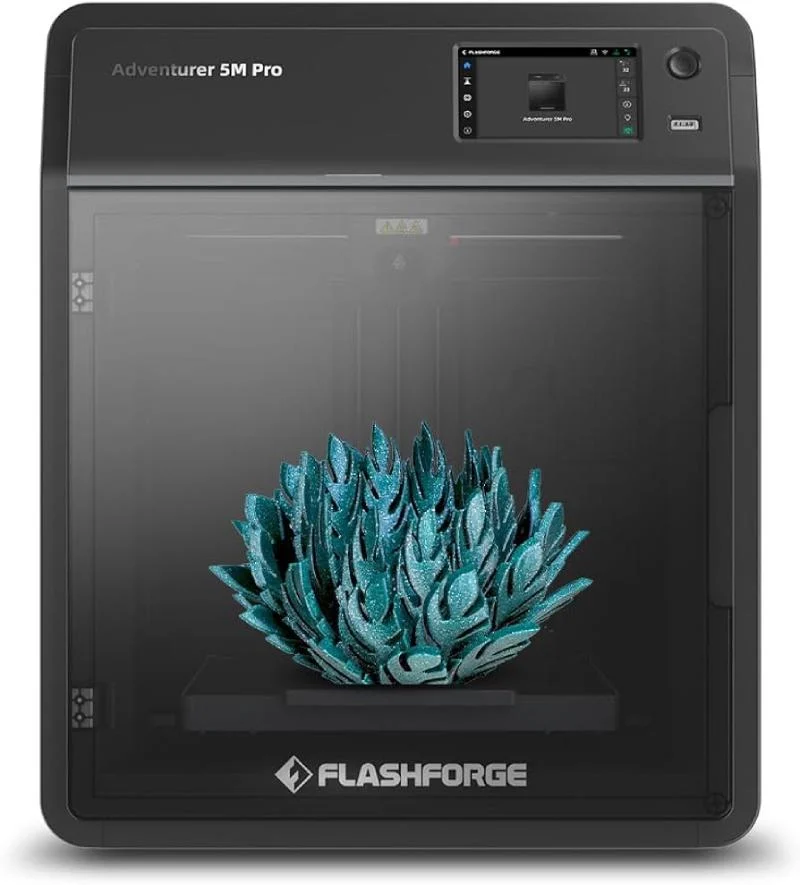Compare Halot Mage PRO vs Adventurer 5M PRO
Comparison between the best 3D printers
Choose the best 3D printer at the best price. The cheapest 3D printers are here.
Buy a 3D printer here with 3D Fila.
 |
 |
|
| Model | Halot Mage PRO |
Adventurer 5M PRO |
| Printing Material | Resin | Filament |
| Buy Resin for Creality 3D Halot Mage PRO | Buy Filament forFlashforge Adventurer 5M PRO | |
| Estimated price | $479,00 | $599,00 |
| Manufacturer | Creality 3D | Flashforge |
| Release Year | 2023 | 2023 |
| Print Volume [mm] | 228x128x230 | 220x220x220 |
| Printer Size [mm] | 333x270x608 | 380x400x453 |
| Weight [kg] | 13,3 | 10,8 |
| Power Loss Recovery | NO | YES |
| Maximum Resolution [mm] | 0,01 | 0,1 |
| Processor | ||
| Display | Display touchscreen 4,3'' | Touchscreen 4,3'' |
| Power Supply | 150 W | 350 W |
| Connectivity | USB / Wi-Fi / Ethernet | Wifi / Ethernet / USB |
| Operating systems | Windows, Mac, Linux | Windows, Linux, Macbook |
| Date of registration in the system | 2023-12-18 | 2024-07-09 |
| Release date | 2023 | 2023 |
| Extra features | The Creality HALOT-MAGE PRO is an advanced resin 3D printer, distinguished by its high build quality and detailed prints. It uses SLA technology with an 8K LCD screen, providing refined prints in a 228x128x230mm area. It offers an impressive printing speed of up to 170mm/h. Its design includes an automatic resin management system and an integrated air purifier, making it easier to use and reducing odors. Although it requires post-print cleaning, its intuitive interface and connectivity options such as cloud and LAN make the HALOT-MAGE PRO a robust choice for professionals and enthusiasts. | The Flashforge Adventurer 5M PRO features advanced features such as a CoreXY motion system, direct drive extruder, print speeds of up to 600mm/s and maximum acceleration of 20,000mm/s². It features fast nozzle changes, automatic calibration, active vibration compensation, camera monitoring, time-lapse video, HEPA and carbon filters for particles and VOCs, and an intuitive 4.3-inch touchscreen interface. Ideal for printing materials such as PLA, PETG, ABS and TPU. |
| Support for multiple colors and materials (AMS and CFS) | NO | NO |
Notes * |
||
| Cost-benefit | 8 / 10 | 7 / 10 |
| Hardware | 3.5 / 10 | 3.5 / 10 |
| Tela | . | . |
| Print volume | 3 / 10 | 3 / 10 |
| Performance | 9 / 10 | 5 / 10 |
Conclusion |
| ### Conclusion In comparing the Creality HALOT-MAGE PRO and the Flashforge Adventurer 5M PRO, both printers offer exceptional features suited to different printing needs, but with notable differences—especially in terms of technology, ease of use, and target users. The **Halot Mage PRO**, priced more affordably, excels in print quality thanks to its SLA technology and 8K LCD screen, delivering highly detailed resin prints. With a slight edge in build volume and impressive printing speeds of up to 170mm/h, it is ideal for users focusing on intricate designs and prototypes. Features like automatic resin management and an integrated air purifier enhance usability, particularly for those new to resin printing or concerned about safety. Conversely, the **Adventurer 5M PRO** is positioned as a versatile FDM printer that benefits from advanced CoreXY technology for rapid print speeds of up to 600mm/s. Its robust feature set—including automatic calibration, camera monitoring, and a more comprehensive print volume—makes it an excellent choice for creators who prioritize both speed and ease of use for a variety of materials like PLA, PETG, and ABS. The additional features geared toward operational efficiency and user interface contribute to a seamless printing experience. Ultimately, the decision comes down to intended applications. For users seeking the finest details in resin prints and who can accommodate the post-print cleaning process, the Halot Mage PRO offers superior results at a better price. On the other hand, if speed, material versatility, and advanced features are key priorities, the Flashforge Adventurer 5M PRO may justify its higher price point and deliver a satisfying experience for more general 3D printing needs. Both printers score well in cost-benefit analysis, hence users should select based on specific requirements and expected outcomes. |

